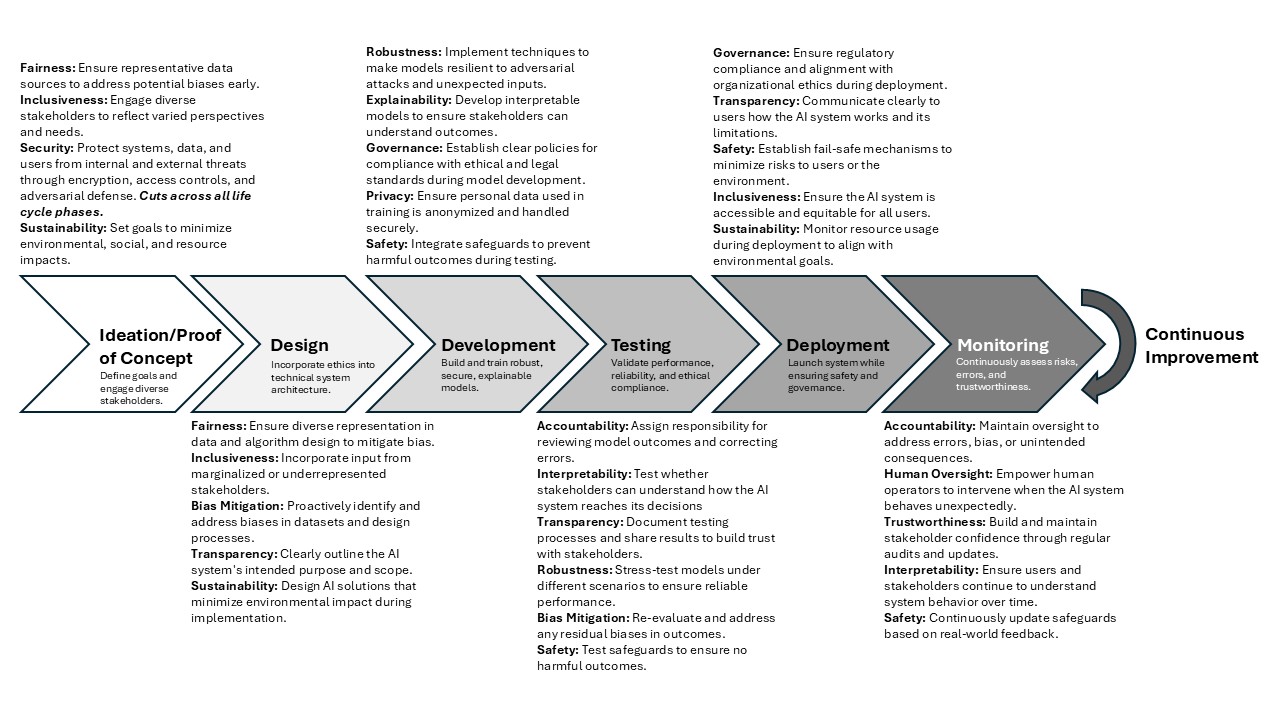Ideation/Proof of Concept
Frame the problem, the people affected, and the intended benefits before any build. Identify relevant RAISEF drivers early, surface key risks, and choose initial indicators you will measure later. A lightweight concept should already show how fairness, privacy, and safety will be considered as the idea matures.


